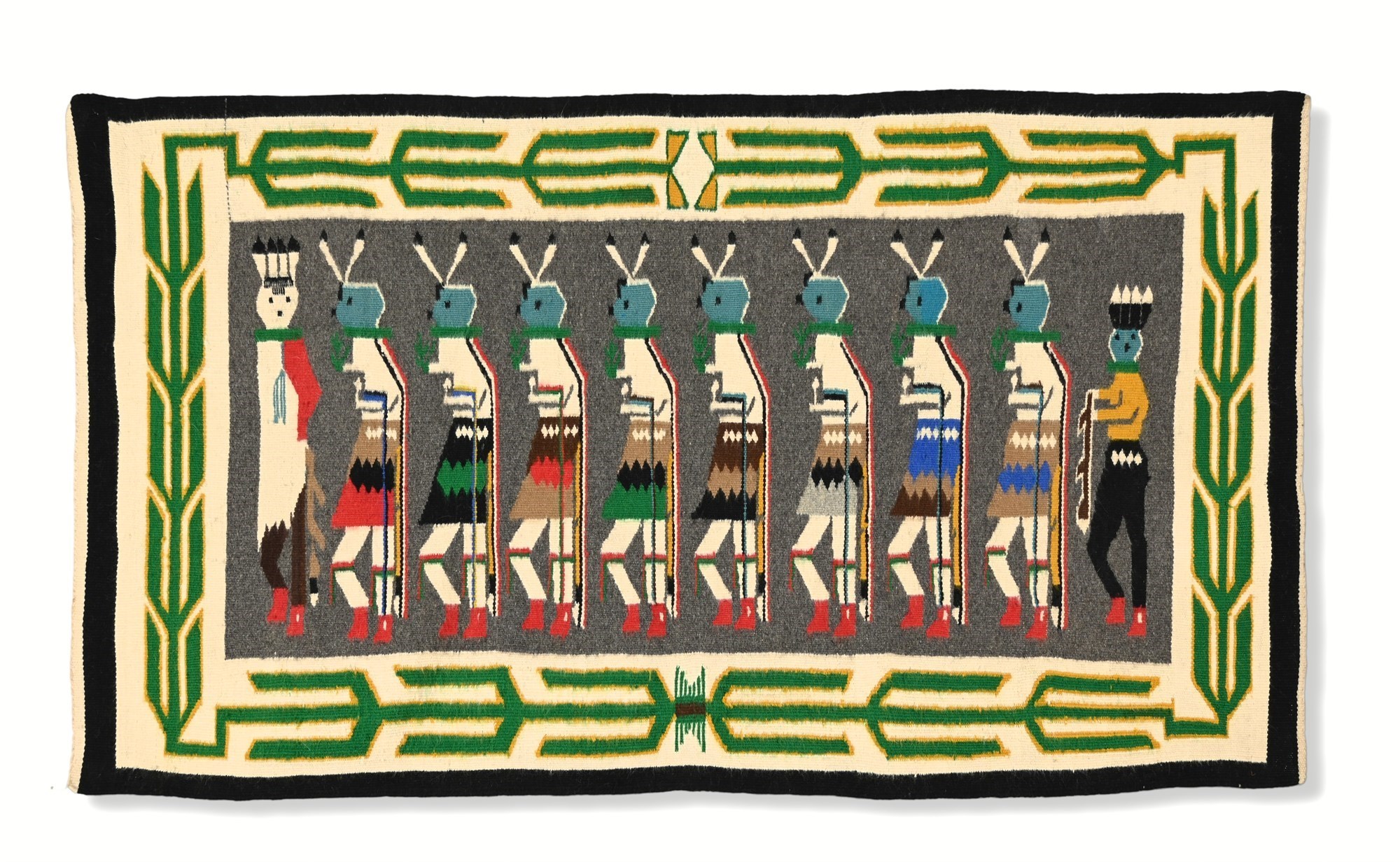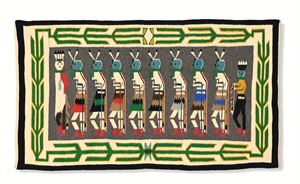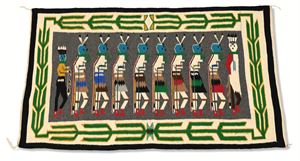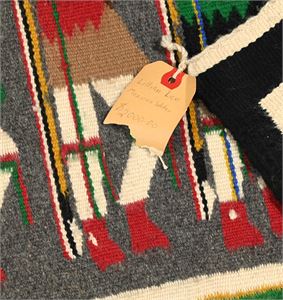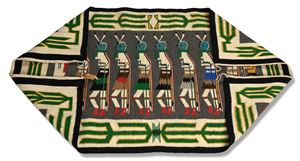Lillian Lee Navajo Yeibichai Rug, Mexican Water, 31.5 x 53.5 in View Watchlist >
Seller Accepts Credit Cards
Payment and pickup instructions will be available on your invoice (under "My Account") at the conclusion of this auction.
Lot # M225
System ID # 23753961
Start Date
End Date
2 Watching
Lillian Lee Navajo Yeibichai Rug, Mexican Water, 31.5 x 53.5 in
Woven by Lillian (Lillie) Lee (Diné) at Mexican Water (Naakaii tó), Navajo Nation, this Yeibichai masterpiece carries the cadence of ceremony and the clarity of a named weaver’s hand. The original trading‑post tag remains attached—“Lillian Lee – Mexican Water – $2000”—affirming maker and place while underscoring the work’s recognized value in the market.
The Weaving & Its Cultural Meaning.
Across a storm‑gray field, eleven Yeibichai dancers stride in profile—knees flexed, red moccasins flashing—led by the white‑faced Talking God and closed by the Water Sprinkler figure. Turquoise masks, spruce‑green neck ruffs, patterned skirts and rattles animate the procession. A bold cream border, articulated with stylized corn and lightning motifs, speaks to rain, growth, and balance. In Diné belief, Yei are the Holy People; Yeibichai weavings depict human dancers who personify them during the winter Nightway. Traders around Shiprock popularized this pictorial form in the early 20th century, and Northern Agency communities such as Mexican Water became active centers for these ceremonial designs—of which this rug is an exemplary, shareable expression.
Mexican Water
Physically, Mexican Water is an unincorporated community on the Navajo Nation in Apache County, Arizona, roughly 14 miles west of Red Mesa and near the junction of U.S. 160 and U.S. 191, at a steep, rocky crossing of the Chinle Wash—features long noted in regional references and maps. A trading post was established here in 1907 (under the name Nokaita), and a new bridge was completed in 1939 as erosion made the river crossing impassable—facts that show why the site became a true crossroads for wool and weavings.
Its Diné name, Naakaii tó—“Mexican’s watering point”—comes with layered local stories: travelers described as Mexicans or Spaniards stopping to dig or draw water at a seep near today’s Baptist church or from pools along the Chinle Wash; the chapter’s history page preserves the phrasing “Nakai tó hi ye nili” (“Mexicans take out water”). The Navajo Times famously calls the modern chapter complex “the jewel of the desert,” a reminder that this is a living community whose identity still radiates from the presence of water and the roads that meet there.
Artist—Lillian (Lillie) Lee.
Lillian (often cataloged as Lillie) Lee is a named Diné weaver whose Yei/Yeibichai textiles circulate in respected galleries; Sorrel Sky’s listing of a 39" × 51" Lillie Lee Yei at $2,500 documents her current‑market presence. “Lee” is among the historic surnames in the Mexican Water area and the chapter profile records Lee families among early residents of the community.
Dimensions
31.5 x 53.5 inches
Condition
Good overall. No damage, discoloring, fading or soiling present. Ready for immediate display.
